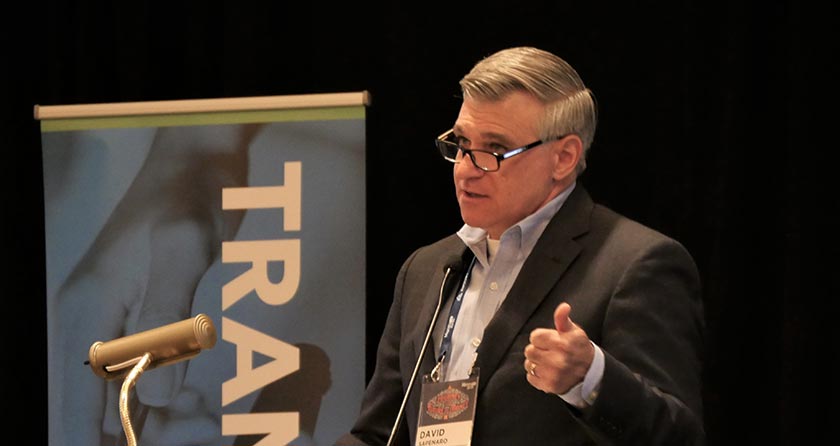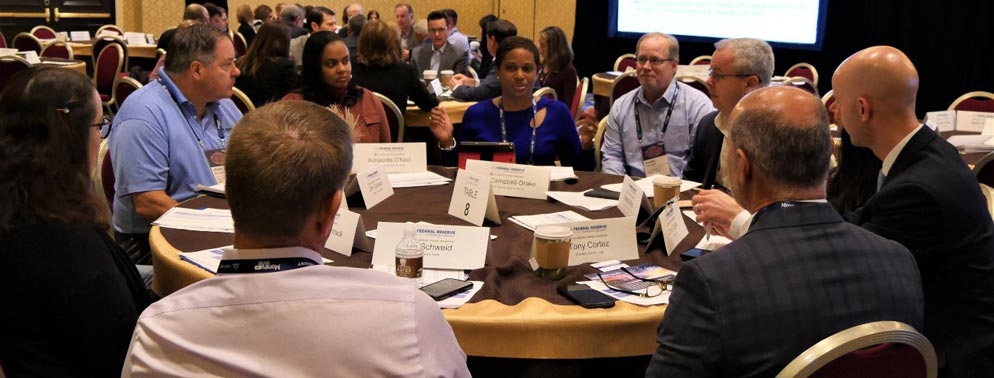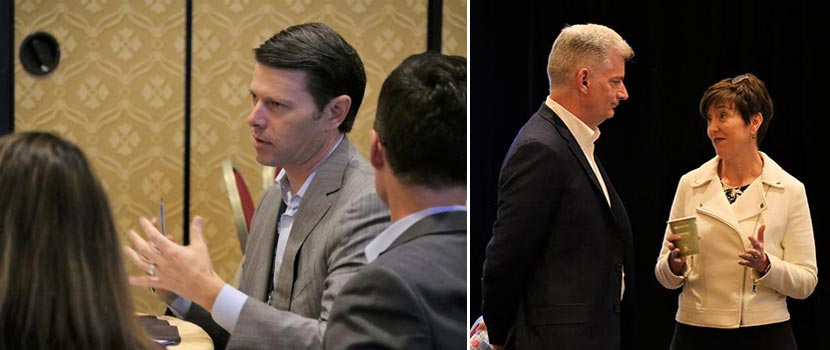Collaboration with payments industry stakeholders continues to be one of the five key tenets of the Federal Reserve’s payments improvement initiatives and a vital component of achieving safe, ubiquitous and faster payments in the United States. Most recently, our collaboration occurred through a series of FedPayments Improvement roundtable sessions during October’s Money20/20 conference in Las Vegas.
“We’re here because we believe that industry collaboration is the foundation of any enduring strategic improvements to the U.S. payment system,” said Dave Sapenaro, the Fed’s payments improvement program executive. “Following the tremendous engagement at our FedPayments Improvement Community Forum last year, and the success of our roundtable at Nacha Payments this year, we wanted to provide more opportunities for the industry to meet with our payments experts face-to-face and hear what the Fed is working on.”

Below are highlights of our three roundtable sessions and the in-person discussions that took place.
FedNowSM Service: Laying the Foundation for Innovation
We heard varied perspectives during our in-person roundtable conversations with stakeholders in the FedPayments Improvement Community. Their roundtable comments on the FedNow Service supplement formal comments (Off-site) submitted via the Federal Register notice comment process, which concluded on Thursday, Nov. 7, two weeks after our roundtable.
After hearing a brief overview of the FedNow Service at our roundtable, including features under consideration for the initial launch and potential future enhancements, participants were grouped by industry segment, including small/midsize financial institutions, large financial institutions and value-added service providers. Some common themes from the discussions:
- Participants said the features under consideration are generally a good starting point. (These features are listed online on the FedNow Service Product Sheet.) Several attendees mentioned the importance of monitoring global faster payments service enhancements as a source of additional good ideas for FedNow Service development (Off-site. PDF).
- Security, interoperability and the timing of our FedNow Service launch were repeatedly mentioned as important issues.
- Ongoing communication and engagement will be important to ensure financial institutions have time to make operational preparations and be ready to implement the FedNow Service when it’s available.

Fraud Factors and Bad Actors
This roundtable session focused on two of the current Federal Reserve payments security initiatives.
- Synthetic identity payments fraud: The week before Money20/20, the Fed published a second Payments Fraud Insights white paper (PDF) on this fast-growing type of fraud. Our new paper focuses on detecting false identities created by using a combination of real and fictitious information. Subject matter experts attending our roundtable shared their insights with participants from financial institutions who were not familiar with synthetic identity fraud, including characteristics that differentiate synthetics from real people.
- Fraud Definitions Work Group: Roundtable participants heard an overview of the draft Fraud Classification Model for Payments, which focuses on ACH, wire and check fraud. At their tables, attendees discussed the ways their respective organizations classify payments fraud; if and how they share fraud information with researchers, banking associations and other stakeholders; and how their organizations could benefit from internal and external use of a fraud classification model. Attendees mentioned the importance of sharing fraud information internally, especially when departments are siloed or isolated from each other, such as when the fraud department doesn’t have much interaction with the credit risk department. In addition, attendees emphasized the value of sharing fraud trends externally, so organizations can understand if they are seeing more, less or about the same amount of fraud as their peers.
Go Global: A Dialogue on Progress and Pain in Cross-Border Payments
Globalization continues to accelerate, creating a growing need for cross-border payments that are fast, efficient and accessible. Typically, consumer and business cross-border payments involve much higher transaction fees and longer processing times than domestic payments. The Federal Reserve has engaged stakeholders to understand and assess the challenges and opportunities to enhance the timeliness, cost effectiveness and convenience of cross-border payments.
This roundtable session opened with a brief overview of the cross-border payments landscape. This included systemic challenges, as well as initiatives underway to address those issues, including internal primary and secondary research conducted by Federal Reserve Payments Policy Group staff members. At their tables, participants then discussed the cross-border payments challenges experienced by their organizations – and in some cases, by themselves as individuals – as well as potential future approaches for improving cross-border payments. Attendees said cross-border payment needs vary by region. For example, one U.S. location may have a large population of people sending payments to family members in Asia, while another region has a greater need to send cross-border payments to Europe. Payments also vary by country based on local preferences for cash or mobile payments, or a desire to avoid using cards. Based on end user preferences, payment service providers often exhibit regional strengths, creating barriers to global scalability.

For insights from our Spring FedPayments Improvement roundtable sessions at Nacha Payments, read our summary (PDF) and watch the Nacha roundtable recap video. To stay up to date on the Fed’s payments improvement initiatives, join the FedPayments Improvement Community.
